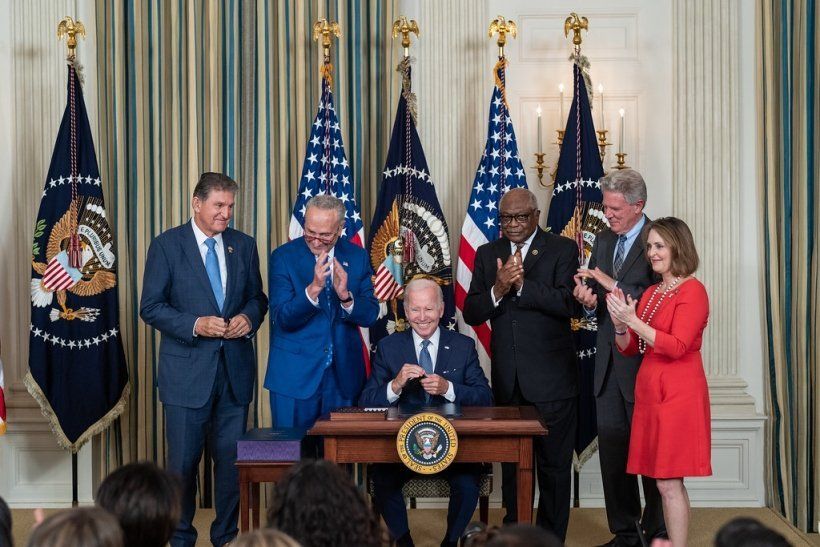the view from heti
3 things to know about the IRA that impact Houston's energy sector

Here are three things to know about how the Inflation Reduction Act is driving a clear tech industrial revolution. Photo via energy.gov
In August of 2022, President Joe Biden signed into law the Inflation Reduction Act which aims to mitigate inflation by reducing the federal government budget deficit and lowering prescription drug prices. Through federal funding and a combination of grants, loans, rebates, incentives and other investments, the IRA also will impact domestic energy production while bolstering efforts for an energy-abundant, low-carbon future.
At the bill’s one-year anniversary, Mitsubishi Heavy Industries America held a panel of leaders across multiple sectors — energy, finance, industry and academia — to discuss the IRA and what it means for the future of business and industries.
Here are three things to know about how the Inflation Reduction Act is driving a clear tech industrial revolution, according to Mitsubishi Heavy Industries:
1. IRA Encourages Private-Sector Investment
Since being passed into law by President Biden in August of 2022, the IRA’s first year yielded:
- Companies have announced 96 gigawatts of new clean power over the previous eight months, enough to power almost 20 million homes – about one-seventh the total number of homes in the U.S.
- Companies have announced enough new U.S. battery manufacturing projects to support production of more than 10 million EVs per year – more vehicles than were manufactured in the U.S. in 2021.
- The IRA’s expected impact on private investment has increased between 50 percent and 200 percent from initial estimates, based on research from the Brookings Institution and Rhodium Group, with the largest jumps related to hydrogen, carbon capture, energy storage and critical minerals.
2. A strong focus on environmental justice
According to a fact sheet issued by the White House, the IRA will: reduce pollution; improve clean transit; make clean energy more affordable and accessible; and strengthen resilience to climate change. With a simple mission to accelerate the energy transition with incentives rather than penalties, the act will allocate nearly $400 billion to efforts to reach a low-carbon, energy abundant future including:
- More than 40 percent of the $27 billion Greenhouse Gas Reduction Fund ($10.8 billion) will benefit low-income and disadvantaged communities.
- $3 billion for states, tribes, municipalities and community-based nonprofit organizations for environmental justice and climate justice block grants. Eligible activities include mitigating climate risks from heat islands and wood heater emissions, and reducing indoor air pollution; climate resiliency; and facilitating engagement of disadvantaged communities.
- $3 billion to reduce air pollution and emissions at ports via the installation of zero-emissions equipment and technology.
- $37.5 million in grants to monitor and reduce air pollution and greenhouse gas emissions at schools in low-income and disadvantaged communities along with another $12.5 million to provide technical assistance to help schools address environmental issues.
- $33 million to the Council on Environmental Quality to collect data and track disproportionate impacts of pollution and climate change on environmental justice communities in addition to $3 million in grants to deploy, integrate and operate air quality sensors in low-income and disadvantaged communities
3. Collaboration reimagined
As the race to net zero continues, tech giants and energy leaders across all sectors ––corporations, governments, nonprofits and academia –– have come together for one common goal: develop solutions to tackle the world’s toughest energy issues. When it comes to progressing the IRA, industry and Mitsubishi President and CEO Takajiro Ishikawa weighed in on collaboration for the act noting that “The energy transition can’t be done by just one party. Collaboration and communication between all parties is key.”
------------
This article originally ran on the Greater Houston Partnership's Houston Energy Transition Initiative blog. HETI exists to support Houston's future as an energy leader. For more information about the Houston Energy Transition Initiative, EnergyCapitalHTX's presenting sponsor, visit htxenergytransition.org.